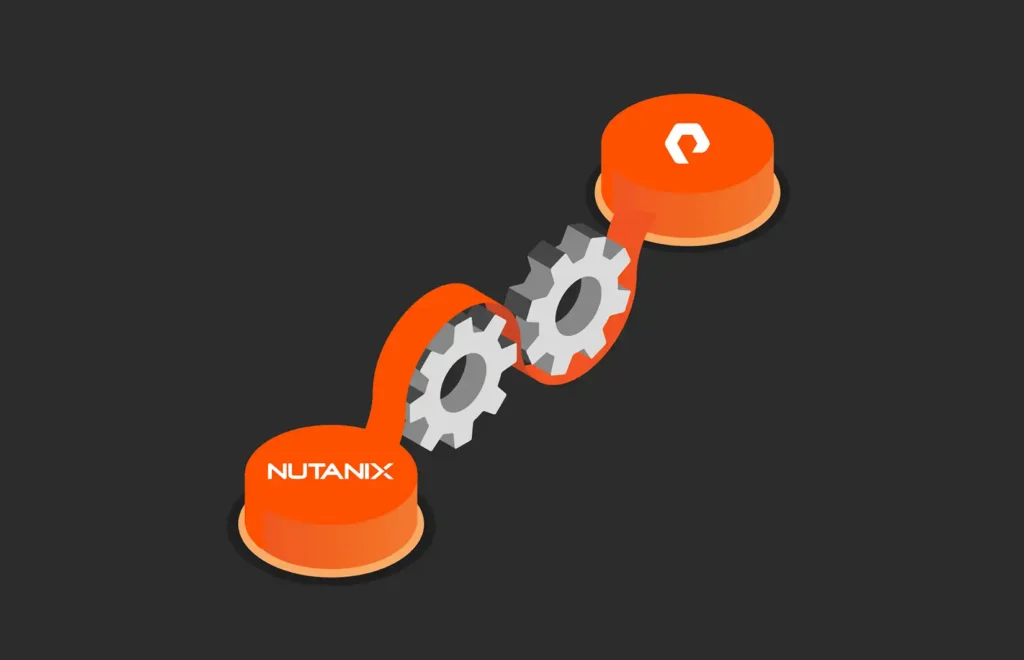Summary
At the Mobile Future Forward Summit, telecom industry leaders gathered to discuss the Quantumverse and the next wave of technology disruption.
As the name suggests, the Mobile Future Forward Summit was a crystal ball-style gathering of telecom industry leaders to discuss the future of one of the most dynamic global industries. The major U.S.-based carriers were in attendance—AT&T, T-Mobile, and Verizon—along with organizations you might not have expected, such as Costco Wholesale, Kuka Robotics, and the University of Washington Medicine healthcare system.
Sponsors were dominated by telecom solution providers, such as Amdocs, Ericsson, Intel, and Nokia. Pure Storage was proud to sponsor alongside these elite organizations.
The theme of the event was the “Quantumverse.” As defined by Chetan Sharma Consulting, the Quantumverse is the intersection of multiple advancing technologies, including quantum computing, artificial intelligence (AI), 5G, edge computing, autonomous systems, and the metaverse. These will form the next wave of technology disruption, creating new use cases, insights, and revenue streams. While perhaps an oversimplification, the core of the Quantumverse will be the combination of unprecedented new computational power brought to bear on AI workloads, with 5G and 6G data services providing the underlying connectivity and delivery systems.
Fixed Wireless and Private 5G
As befits a summit with “Mobile” in its name, telecom technology was a leading topic. Consumer 5G is already in play. For future thinkers, fixed wireless is the next big business opportunity. As the name implies, fixed wireless uses a receiver (antenna) that is fixed at the user’s location and communicates with a nearby wireless tower. This provides high-bandwidth services to the location instead of systems that rely on physical connections, like fiber or cable.
In the U.S. alone, fixed wireless is approaching a $10 billion annual market. The technology has multiple advantages. It’s quick to deploy since it doesn’t require cabling. This also makes it useful for remote areas that may not have communications infrastructure. Upgrades are easier and performance can be enhanced through software and protocol updates. Fixed wireless is already starting to siphon off a lot of broadband customers from cable companies.
Another future-looking technology is the private 5G network. As the name implies, these are dedicated 5G networks that are used by a single organization. Private 5G can deliver extremely high performance, support for huge numbers of devices, and exceptional security. Some networks are fully private, while others are delivered by network slicing, which creates multiple private “virtual networks” from the same physical infrastructure.
Private 5G delivers the ultra-low latency needed for the futuristic use cases we’ve been hearing about for some time, like smart cities, driverless vehicles, and smart factories. One example mentioned at the event was the fully autonomous cargo container port now operating in Tianjin, China. It’s a massive container operation that has almost no humans onsite. It uses 5G networking, AI, and robotics. It’s extremely impressive, as can be seen in this video, and is already processing over 21 million containers a year.
The Network as Commodity?
Many technology stacks have been commoditized, running on the cheapest possible hardware. This makes sense for some industries, but it’s less likely for telco. This topic was discussed in a panel titled “Building a Resilient 6G Roadmap,” which included Pure Storage CTO of Americas, Michael Cornwell, as well as participants from AT&T (Rob Soni, VP RAN Technology), Ericsson North America (Joe Constantine, EVP, Chief Strategy & Technology Officer), and NVIDIA (Chris Penrose, SVP Teleco), and was moderated by Jeff Belk, CEO of Ocreati Advisors.
The challenge for telcos is that they’re highly regulated, and network reliability is absolutely paramount because service “dial tone” must be maintained. This argues against a “cheapest is best” mentality and instead focuses on best in class. But telcos have to always be thinking ahead, and the next enhancement is always in view, such as the eventual shift from 5G to 6G, even as 4G services must be maintained.
As communications providers, telcos can’t just shut off a tier of service. Transitions can take decades, and this creates enormous network complexity. Having a flexible service infrastructure that can grow and improve over time is essential. This is why the Pure Storage platform is being adopted by more and more telcos, including the 10 largest global telcos (not including Chinese carriers who don’t purchase American equipment).
With the Pure Storage Evergreen architecture, storage arrays can be upgraded without any service disruptions. This includes both software and hardware upgrades, even upgrading controllers to next-generation models. There have been thousands of successful hardware and software upgrades across telcos running Pure Storage arrays.
Pure Storage has also innovated in how our customers can purchase storage, with the most flexible subscription models in the industry. As-a-service purchasing is especially helpful for projects with unknown futures, such as AI. Many AI projects fail, while others will explode and require fast deployment of new capacity. The unique Evergreen//One™ for AI subscription provides performance guarantees based on the maximum bandwidth requirements of your GPUs and accelerators without regard to storage capacity. It helps to de-risk AI investments and opens room for more experimentation.

The Innovation Race
Reducing Risk and Navigating the AI Frontier for Future Success
Getting AI Right: It’s Not Just Bigger and Faster
To no one’s surprise, artificial intelligence was a key focus of many discussions, with an emphasis on the what over the how. Many industry AI discussions come down to questions of infrastructure: How many GPUs will be required? How much storage? How much networking capacity? And technical discussions about AI pipelines and tools.
At Mobile Future Forward, discussion centered on the business outcomes for AI. What do organizations seek to achieve? An example was chatbot technology, such as interactive avatars. They’re among the more common AI projects across many industries that are hoping to enhance customer service and reduce churn. But the most important part to get right is not the technology stack, which you can always modify, but the avatar itself, its personality. A one-size-fits-all approach may not work, as younger audiences may prefer a more casual, friendly toned avatar, while older audiences might appreciate more formality.
Psychology can play a role as well. Is your avatar going to be funny (humor can often backfire)? Empathetic or impersonal? Will it consider the participant’s cultural background, current emotional state, or economic situation? The challenges are as complex as the humans interacting with the avatar. Forward-thinking organizations need to consider the implications of all their AI efforts, not just how to deploy the GPU racks.
The Future Is Now
All industries, and telcos in particular, need to look ahead. The decisions you make today can directly impact your success five or even 10 years down the line. That doesn’t mean you should take a fearful approach to growth and change. Boldness remains a virtue in a competitive industry. But careful planning is paramount, and building a next-generation network infrastructure that can grow and change with you, rather than being a drag on innovation, will be critical moving forward. This year’s Mobile Future Forward was a terrific event for telcos and other industries to think hard about what’s around the next bend. At Pure Storage, we look forward to participating in more of these excellent, future-thinking summits.
Learn more about Pure Storage telecom solutions.
Ready for the Future
Learn how Pure Storage telecom solutions can help your organization.
![]()







